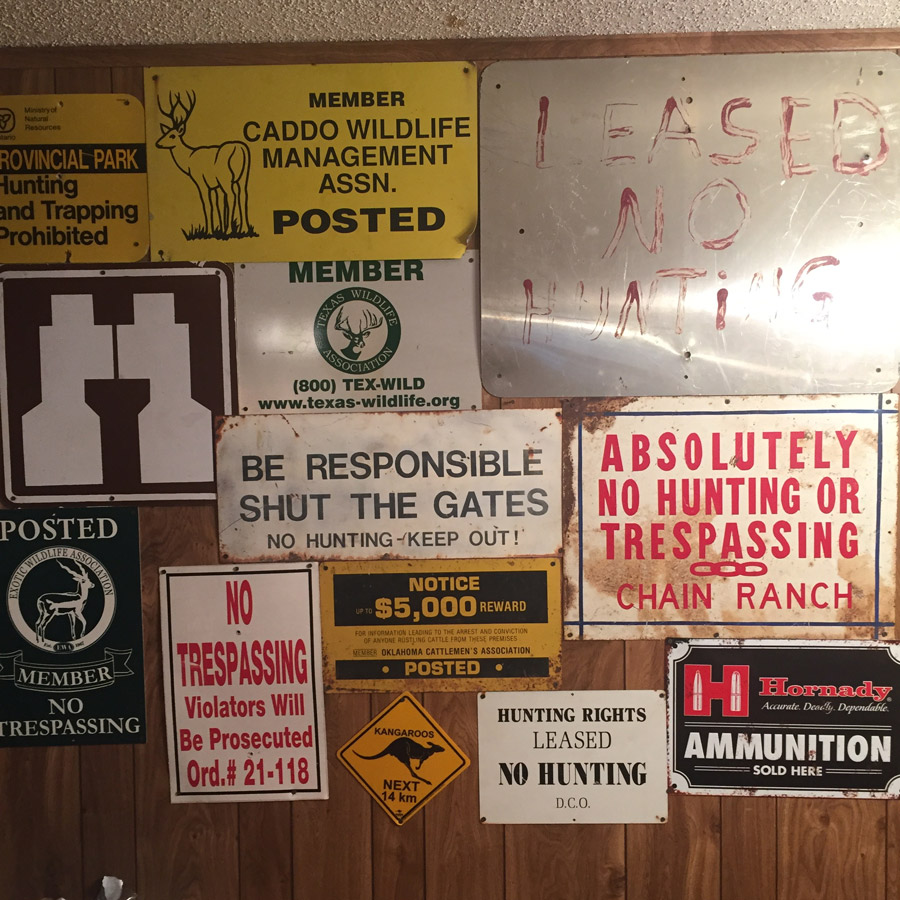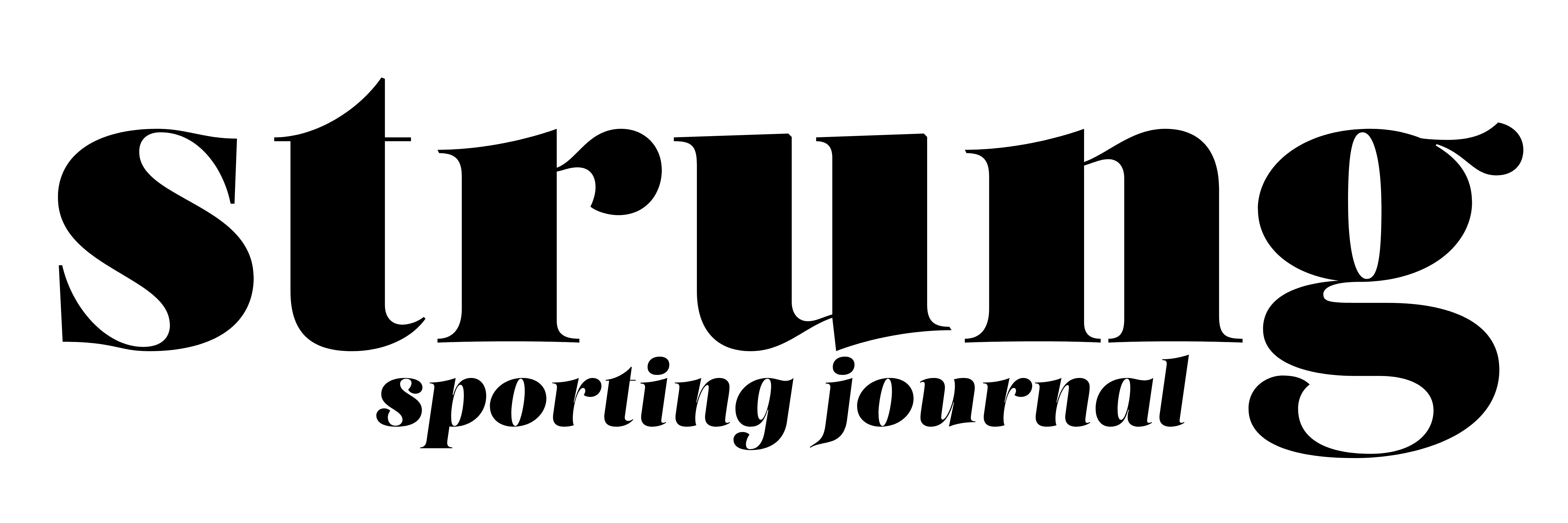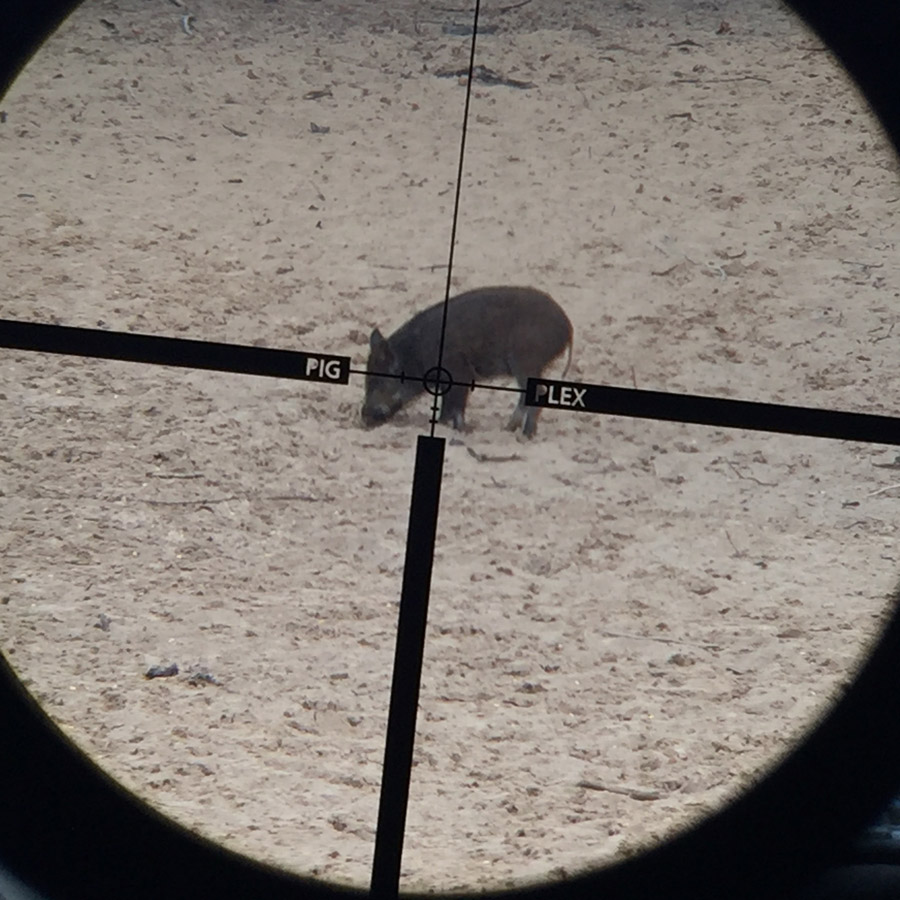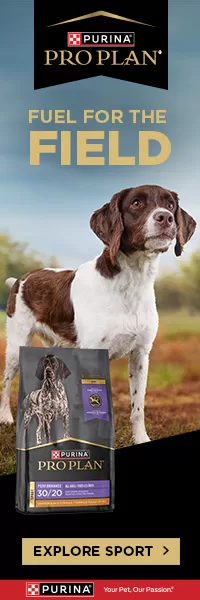The view from hog country, through the lenses of thermal scopes and the dismal science
A good shoot-‘em-up hog hunt is the death of a lot of things, including Adam Smith’s enduring notions of market equity, fair distribution of resources, and restrained behavior.
Had Smith, the father of free-market economics, encountered “pasture roaches,” as feral hogs are called by the West Texas swine-eradication squads, he might have modified his famous conclusion that the “invisible hand” of capitalism guides market behavior.
Political economy, it must be noted at the get-go, is the farthest thing on the mind of Gage Porter, who’s spending the summer before his last season as quarterback of Southern Nazarene University’s Crimson Storm guiding pig hunters across the winter wheat belt west of Wichita Falls. He’s never heard of Adam Smith and couldn’t care less whether Milton Friedman or John Maynard Keynes or any other economic luminary was in the back seat of his battered Yukon, chugging 24-ounce energy drinks and fingering a rifle. Porter is out to kill pigs—“make a pile,” as he puts it—and as long as you don’t shoot a cow or a companion, it’s all the same to him whether you kill one or two dozen. You’ve paid for the night, and now you’re in it .
.
This is Porter’s element, watching a sounder of wild pigs feed into the field of view of our thermal scopes, signal-calling the coming mag-dump melee in a stage whisper. And, truth be told, societal standards don’t matter much when you’re behind a suppressed AK in a harvested wheat field at an indecent hour of the night. In this moment, only a few things snap into focus: your shooting lane, the sizzling luminescent reticle of your thermal scope that looks uncomfortably like a cross burning in a lawn, and the biggest hog of the bunch.
Briefly back to Adam Smith, that celebrated philosopher of eighteenth-century England, whose contribution to economics is his thesis that unfettered markets are normalized because supply always rises to meet demand, which in turn picks and chooses market winners based on price, quality, and availability. I’ve tested this theory a half-dozen times with feral hogs, and it’s as incorrect in Oklahoma and North Texas as it is in Florida and coastal California. It’s wrong because hogs represent what Smith might have called an immoral market, influenced by factors that are neither consistent nor transparent. While demand is fairly linear, predictably determined by those hunters who have available time and money, the market is perverted by the inconsistency of suppliers who have such little regard for their wares that they actually pay pest controllers to eradicate them, but simultaneously overvalue their product to the secondary market of sport hunters.
None of this should stop you from participating in an essential American experience, but this short course in “hogonomics” may help inform your expectations of what can either be a downbeat experience or a hell-yeah rush.
The Pig Crusade
I share a love of both hunting and creative mischief with a motley crew of buddies. Both attributes contributed to our plan to make a DIY road trip to America’s Boar Belt. The idea, hatched during the empty months between the end of ice fishing and the start of turkey season, was informed by the common knowledge that wild hogs are big trouble everywhere south of Interstate 40. We cited lamentations from landowners that these porcine invaders were wrecking their fields. Inspired by accounts that suggested no intensity of firepower or poison could reduce the steady advance of feral hogs, we sprang to action, expecting in some fuzzy way we might be welcomed in hog country as knights from the North, packing ARs and big-bore carbines instead of medieval lances and crossbows.
We’d find landowners with problematic pigs and offer our services to clean out a few fields, free of charge. All we’d ask is for the carcasses, which we intended to convert to wild pork to supplement our families’ diet of venison and stringy pheasants. We’d even cut and wrap a few roasts for the landowners, if they wanted them.
 That’s how we found ourselves rolling south in a worn-out Suburban, towing an enclosed trailer full of our butchering gear, folding tables, a generator, and a stand-up freezer. Plus an impressive amount of beer and an average of two rifles apiece. We actually had a destination: the Chain Ranch of northwest Oklahoma. I’d hunted the Chain years earlier for turkeys and whitetails and had killed a few bonus hogs. I knew they had the supply, and accommodations were included in the $200 per-person per-day hunt fee.
That’s how we found ourselves rolling south in a worn-out Suburban, towing an enclosed trailer full of our butchering gear, folding tables, a generator, and a stand-up freezer. Plus an impressive amount of beer and an average of two rifles apiece. We actually had a destination: the Chain Ranch of northwest Oklahoma. I’d hunted the Chain years earlier for turkeys and whitetails and had killed a few bonus hogs. I knew they had the supply, and accommodations were included in the $200 per-person per-day hunt fee.
The first real surprise of the trip, after overnights in increasingly appalling non-franchise motels, was that we were crowded into a panel van and driven into a high-fence enclosure not far from the Chain Ranch bunkhouse. The driver told us we were hunting the most pig-rich pasture on the ranch, and to shoot straight. He’d pick us up an hour or two after dark. My buddy Ed was bowhunting and was put in a hard-sided ground blind about 50 yards above a deer feeder. I decided to sit with Ed to see the action.
The second surprise of the night, and the best evidence this was no ordinary pasture, was the curling-horned mouflon sheep that swaggered into the feeder. At sunset a sounder of pigs poured out of oakbrush and grubbed around the feeder long enough that Ed encouraged my shot. First pig down: a 60-pounder with pink ears. In all, our crew shot 12 pigs of various sizes.
Then came the third surprise: each pig cost an extra $100, a detail that wasn’t included in my pre-trip accounting. In the course of a couple hours, our crew had accumulated over $1,000 in unbudgeted expenses. The Chain guides said they’d butcher our hogs for an additional fee, which we declined since we were equipped to handle the task ourselves.
It turned out the “pasture” we’d hunted was simply a large hog-proof pen, full of exotics like that mouflon ram and Barbary sheep. The Chain crew told us, as we shared our beer in the butcher shed, that they supplement the captives with free-roaming hogs they trap on the pastures all around. The reason, they said, was to increase the odds of a successful outing for their unguided hunters. Fair enough, but my crew wasn’t prepared, either philosophically or financially, to shoot penned pigs. DIY pig hunting, the Chain guides explained as though they were talking to stubborn third-graders, isn’t a thing. Anywhere we might go, we would have to either pay for pigs or for access, or for both. We pulled out of the Chain early the next morning with a few expensive pork quarters in our coolers and our first acrid taste of the perverted hog economy.
Sooner State Freelancing
We were now left with a decision: head back home, educated and deflated, or push south into Oklahoma, knocking on doors and offering our hog-removal services. As we drove, we scanned the landscape of open pastures, weedy fields, and wind-weary homesteads that didn’t look particularly welcoming. There was no obvious sign of pigs.
Around the Tornado Alley burg of Watonga, I called my buddy Jeff Puckett, a former undercover cop in Norman whom I knew from his work in media relations for Smith & Wesson. When I explained our dilemma, he offered his house and then his friends. He had a buddy with good hog ground south of McAlester in the piney woods of the Chickasaw Nation. Maybe we could hunt there. He’d call. But meanwhile, he said, point the Suburban to Oklahoma City.
Jeff did indeed get us permission on his buddy Mike’s place, and the next day we rolled into our first honest hogs, 1,400 miles from home.
This was hunting, even though much of it was over the automatic corn feeders that are fixtures on every sporting property south of Kansas. Some of the Montana knights missed, others let trophy boars walk, and I managed to kill the smallest pig of the trip: a 3-pound oinker that I whacked with a cedar branch. Mike was our kind of guy, a workaday hunter tuned to the frequencies of charity and adventure. When he mentioned that he was a turkey hunter who had never shot a Merriam’s, we fell all over ourselves offering to hook him up with Montana birds in exchange for his hospitality.
That night back at Jeff’s house, we cut and wrapped our Oklahoma pork, festive and happy to be making meat before our long slog back to Montana, fighting the stiffening spring wind every mile up the plains.
The Magic of Thermals
If my Oklahoma experience proved that connections and reciprocity pay dividends in wild hogs, then my latest hog hunt, with Gage Porter and his fellow guides at Dry Creek Outfitters in Texas, shows that you get what you pay for, which is a satisfyingly Smithian expectation.
I was a guest of Sightmark, the brand that imports Pulsar thermal devices into the United States from Bulgaria. Forgetting for a moment who paid the bills—$400 per night with lodging per person—then this could be considered the bargain of the century for a destination hunter. Our carbines were topped with Pulsar’s flagship thermal riflescope, the Thermion 2, which boasts eight different color-selective viewing modes and a number of different crosshair configurations. It retails for around $4,000.
If the price of a fully outfitted Texas hog hunt—call it $1,000 for a weekend—doesn’t spook you, then the price of thermal sights might. Besides the thermal scope, we deployed Accolade 2 LRF Pro thermal imaging binoculars with built-in rangefinders (another $5,800). That’s a high barrier to participation, but hunting pigs without thermals that literally see into the night is a little like hunting ducks without decoys. You can do it, but you won’t be as routinely successful.
Or make the piles that Porter expects. He says he’s never had a client not kill a pig, and some nights they’ll kill a few dozen. His one-night record is 98 hogs, and he’s killed over 80 multiple times. That’s with his buddies, nearly all of whom play college football somewhere and live on heat-lamp burritos, Monster energy drinks, and Grizzly long-cut chewing tobacco, all procured from Allsup’s, the derelict night-owl institution of West Texas.
They spend the midnight hours driving the back roads of Archer County, Texas, with the headlights off. This is rolling dark, the hog-hunting equivalent of trolling a reservoir.
I’m up first, and after I shoot a lone boar, I produce a folding filet knife and a ziplock bag. I cut out the backstraps, as hot and sticky as the humid night. Porter is disdainful. Hogs are for killing, not eating, he says—especially big boars. But I can’t see leaving the carcasses to rot in the fields. I don’t have to make a pile to have a good hunt. I’m curious to experience thermals, and if I can take home a few bags of wild-pork loin, I’ll be happy.
Back in the Yukon, over Jason Aldean and Garth Brooks from a radio station out of Amarillo, talk turns to tornadoes. Everyone here has seen them, most have had to run from them, and some have had their homes leveled by them. Porter is the only one of the bunch who has actually been inside one: “Mass chaos, shit flying, and then sort of spooky quiet.”
The equal and opposite describes the stalk on a sounder of pasture roaches. We troll the section-line roads, the glow of Wichita Falls like a false dawn to our northeast, scanning fields with our thermals until we find a pod of pigs. Porter confirms we can hunt here—Dry Creek Outfitting leases something like 100,000 acres for hog hunting—and then he turns to us in the blacked-out cab of the Yukon.
“We’re gonna walk that fenceline until we get the wind right, then we’re gonna ease up within 60 to 70 yards. Then we’re gonna line up.” His twang tightens. “And we’re gonna kill ‘em all.”
It’s like a tornado in reverse. We’re surprisingly quiet as we walk the harvested wheat field in the dark, the stubble and damp earth muffling our footfalls, each of us fretful we’ll step on a snake or twist an ankle in the hog-rooted ground. We stop periodically to scan the field with our thermal binoculars, confirming the location of the sounder. Thermals detect small differences in temperatures, and on a cool night like this, viewing with the unit’s “black-hot” mode, the hot little pigs stand out like black ants in a sea of foam. As we get closer, the blobs become more defined. I can make out the shapes of heads, then the outlines of ears, and finally even the superheated core of stomachs, digesting high-calorie waste wheat.
We’re all shooting some variation of a suppressed AK-47 chambered in the go-to round of Texas pig hunters: the 7.62×39, formerly known as the 7.62 Soviet or the .30 Russian Short. The AK’s sloppy action is reliable even when dusty or wet, the steel-cased cartridge is cheap, and the 124-grain bullet is effective out to 200 yards. We have either tripods or shooting sticks, and when we get within range, we’ll plant our supports, get our scopes on target, and wait for Porter’s countdown.
But it’s taking us forever to get within range. The sounder is feeding away from us, and we can’t close the distance. We’re 15 minutes and then 40 minutes into our stalk, and Porter whispers that when we get within 100 yards, we’re going to set up and count down. We slog across the field, mud weighing down our boots and my anticipation rising.
 Finally we’re as close as we’re going to get. We get behind the rifles, place phosphorescent reticles on our targets, and Porter starts the 3-2-1…. The only sure shot is the first, and then it’s a carnival of light streaks from hot bullets, the ripe-melon thump of slugs hitting either pigs or mud, terrified squeals of gutshot hogs, and the plop-plop-plop rhythm of suppressed carbines running fast. I see through my thermal black heaps—but also plenty of very mobile pigs, some running straight for us, others flushing away.
Finally we’re as close as we’re going to get. We get behind the rifles, place phosphorescent reticles on our targets, and Porter starts the 3-2-1…. The only sure shot is the first, and then it’s a carnival of light streaks from hot bullets, the ripe-melon thump of slugs hitting either pigs or mud, terrified squeals of gutshot hogs, and the plop-plop-plop rhythm of suppressed carbines running fast. I see through my thermal black heaps—but also plenty of very mobile pigs, some running straight for us, others flushing away.
I’ll have plenty of work for my filet knife, but that’s not what’s on my mind. In 15 seconds, I’ve achieved the goal of any sounder stalk: a mag dump. I’ve sent 30 rounds downrange, a good percentage of them making meat. I realize, standing there in the sudden silence, that I really do want to kill them all.




